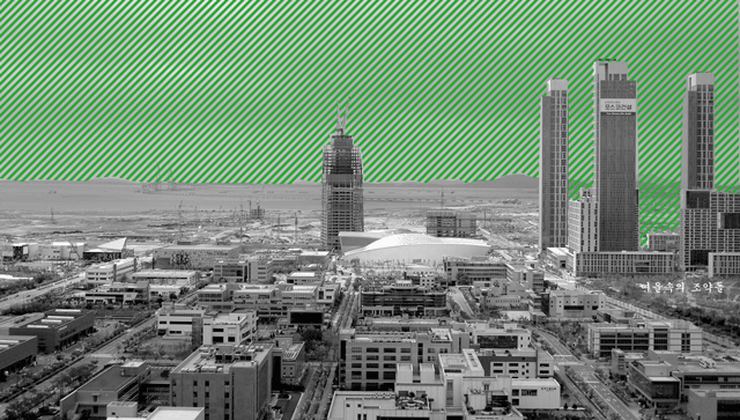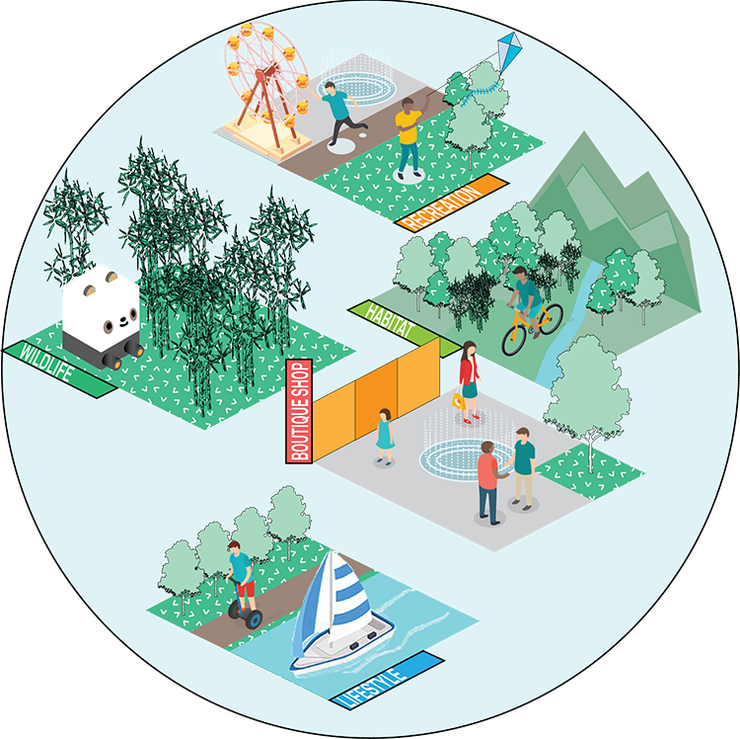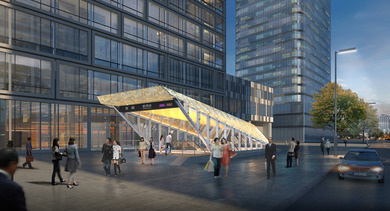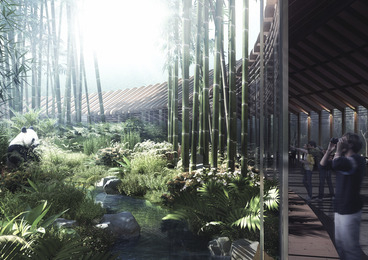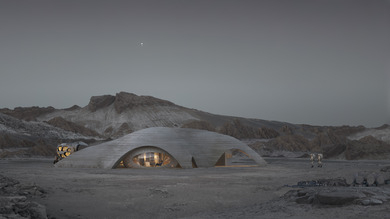An ‘open-source’ model for smart cities
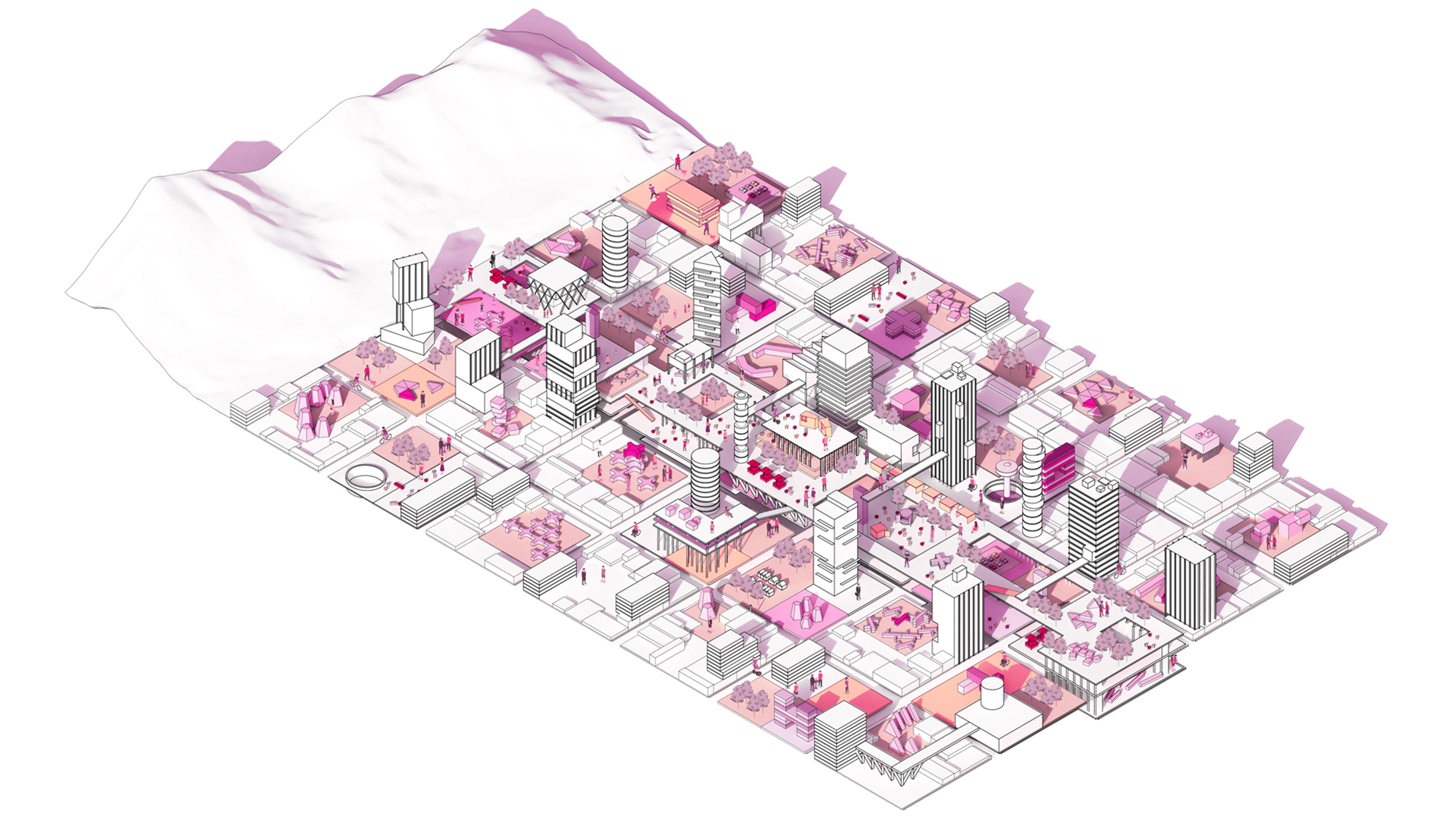
How urban design can lead us to a ‘smart’– and socially responsible – future
Text and illustrations by Liam Mouritz
Governments, developers and big-tech companies have become enamoured with the possibility of the smart city: an efficient, convenient (and profitable) ‘smart’ metropolis to help accommodate and optimise rapid urban growth. They propose augmenting smart cities with a vast array of sensors; harvesting data to feed an interconnected urban computer, which could synthesise an amazing array of data to choreograph traffic, improve logistics, reduce energy consumption and deter crime.
Also referred to as a city of surveillance, critics have discussed several potential downsides, including the loss of privacy, agency and chance. Despite these concerns, technological transformation is inevitable.
Instead of turning our backs on ‘smart’ ideas and aspirations, urban designers can direct the use of new technologies in ways that uphold the principles of good cities and societies – fostering inclusivity, diversity, collaboration and resilience.
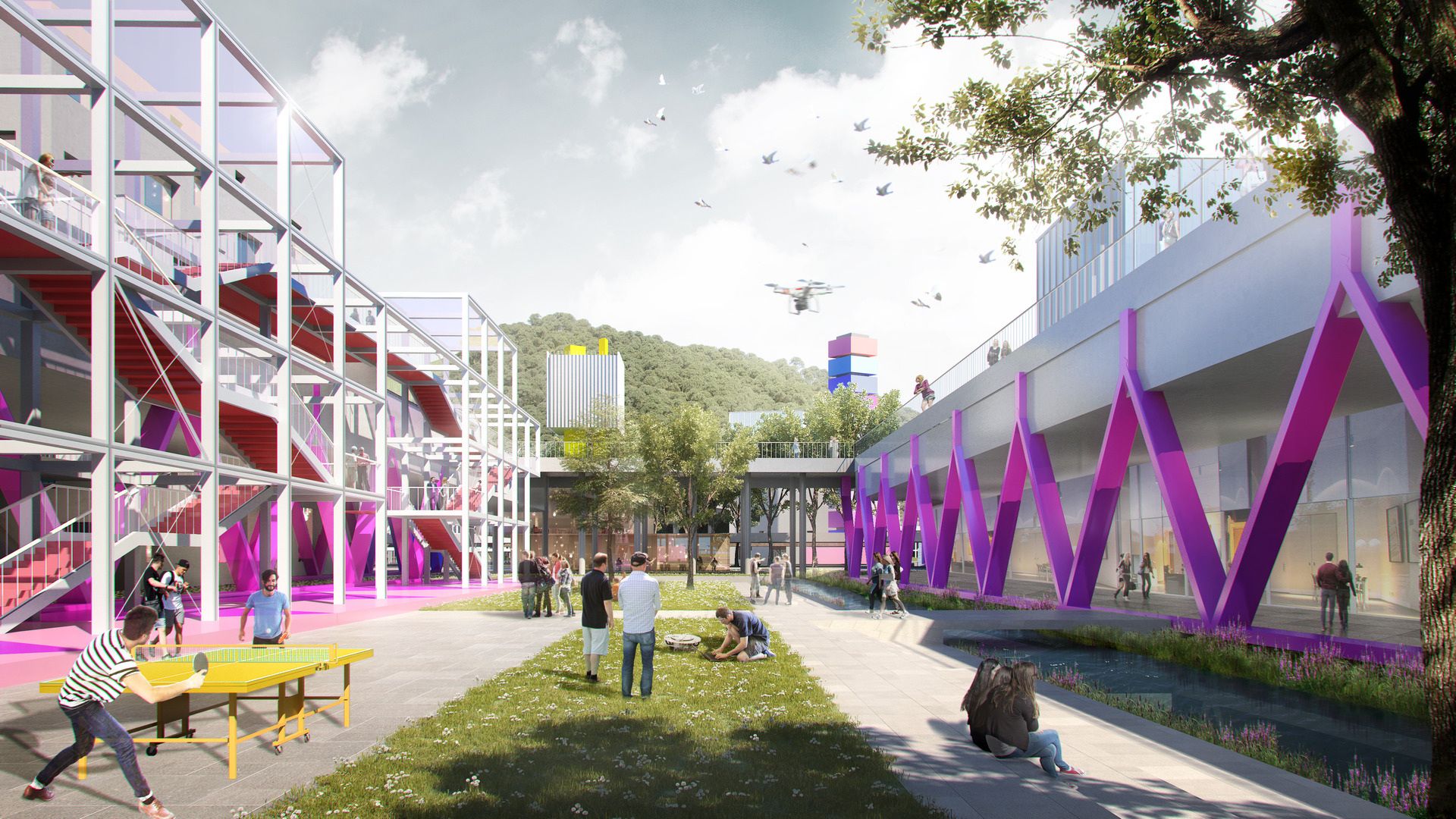
MASS CONNECTION, BUT MINIMAL REFLECTION
Algorithms fuelled by the mass collection of data already influence many aspects of our daily lives. As a digital-native, it feels almost impossible to opt-out of the system. I am content ticking the terms and conditions, giving up my personal data for the sake of convenience. Meanwhile, my apps learn more and more about me, accurately predicting my tastes to feed me the music I listen to, the movies I watch, the news I receive, the articles I read, the events I go to and even the people that I date…!
We are only now starting to grasp what these technological transformations mean for society. The early days of the digital era, epitomised by the culture of hacker ethics, promised a connected, decentralized world in which information would be freely shared to benefit society and democracy. But the internet has also brought some downsides. Most significantly, these include facilitating an echo-chamber to fragment elements of society to the point where different groups struggle to negotiate for common ground when they disagree so vehemently on the fundamentals. Humanity is unable to act on global issues, such as the climate crisis, as disengagement, social isolation and anxiety become increasingly commonplace. The new drama series Years and Years provides a disturbingly realistic dystopic scenario of the role that digital technologies could play in a society declining amid forced climate migration, international conflict, class segregation, surveillance, trans-digital humans, populist leadership and totalitarian regimes.
CHINA’S HIGH-TECH CITIES, DEVELOPING AT HYPERSPEED
As an urban designer working in China, it’s particularly important to grapple with the implications presented by the spread of digital technologies and their promotion through smart cities rhetoric and programs. The country is undergoing a rapid shift, from a production-oriented economy to a knowledge and service economy. As a result, anything labelled smart, high-tech or innovative is actively encouraged.
China’s urban transformation continues at a rapid pace in a hyper-competitive environment where every city is trying to ‘out-smart’ all the others.
Hassell recently won a master plan competition to transform Shenzhen’s Xinqiao District. Here, we were presented with a great opportunity to explore a new model for smart and ecological cities, fostering a culture of innovation. Xinqiao is a highly developed, but ageing, industrial area that the Urban Renewal Bureau of Bao’An District wants to redevelop as a new benchmark for smart urban transformations. They want to integrate Xinqiao with China’s planned Science and Technology Innovation Corridor, between Shenzhen and Guangzhou, and with the surrounding natural environment.
The rapidly formed city of Shenzhen is a fascinating example of urban transformation now rivalling Silicon Valley as the global leader in high-tech design and manufacturing. It’s a city which has developed its own unique ingredients for high-tech culture, but not in the sense of data collection and control that the ‘smart city’ tagline is becoming known for elsewhere. Bunnie Huang, a hardware engineer and hacker who wrote the guidebook to Shenzhen electronics, describes the city through the language of ecology – suggesting it showcases a high degree of ‘fecundity’ – the ability to produce of an abundance of new growth. It is a city where you have everything you need to rapidly design, prototype, manufacture, sell, get feedback, and recycle into a new innovative design.
‘OPEN-SOURCE’ SHENZHEN – A NEW EXEMPLAR FOR INNOVATION
In contrast to the strict IP protection and privatisation in the culture of tech companies and the suburban Silicon Valley, in Shenzhen ideas are actively shared, copied, traded and hybridised to create new products at a rapid pace. The concept of ‘Shanzhai’ – literally meaning ‘to copy’ or ‘to parody’ – has influenced the operation of various tech companies from grassroots business to established companies like Xiaomi.
As Bruce Sterling highlighted in Wired, “Creators build on each other’s work, co-opt, repurpose, and remix in a decentralized way, creating original products like a cell phone with a compass that points to Mecca (selling well in Islamic countries) and simple cell phones that have modular, replaceable parts which need little equipment to open or repair.”
This approach reminds me of the ‘open-source’ movement – where a software or script is shared with the public for free, encouraging further contribution from other designers, fostering a culture of collaboration and productive competition. And posed the question to the Hassell Xinqiao Precinct team.
Could Shenzhen’s innovative, open-source, tech development culture be translated into the urban design for a new smart city?

XINQIAO’S SMART FUTURE IS WIDE OPEN
Responding to this question, we proposed a clear master plan framework – a series of public realm corridors around which the city can build and connect into. These are public spaces integrating landscape and architecture; highly vegetated, shady and comfortable on the ground level with vibrant and active elevated walkways above.
This framework acts as the ‘source code’ from which the city grows, emphasising public space as a key part of the city. New activities and programs would emerge (software updates), while the initial landscape structure (hardware) remains. This approach balances top-down with bottom-up design thinking – providing good bones that allow the city to gradually establish itself as a vibrant place with an innovative culture.
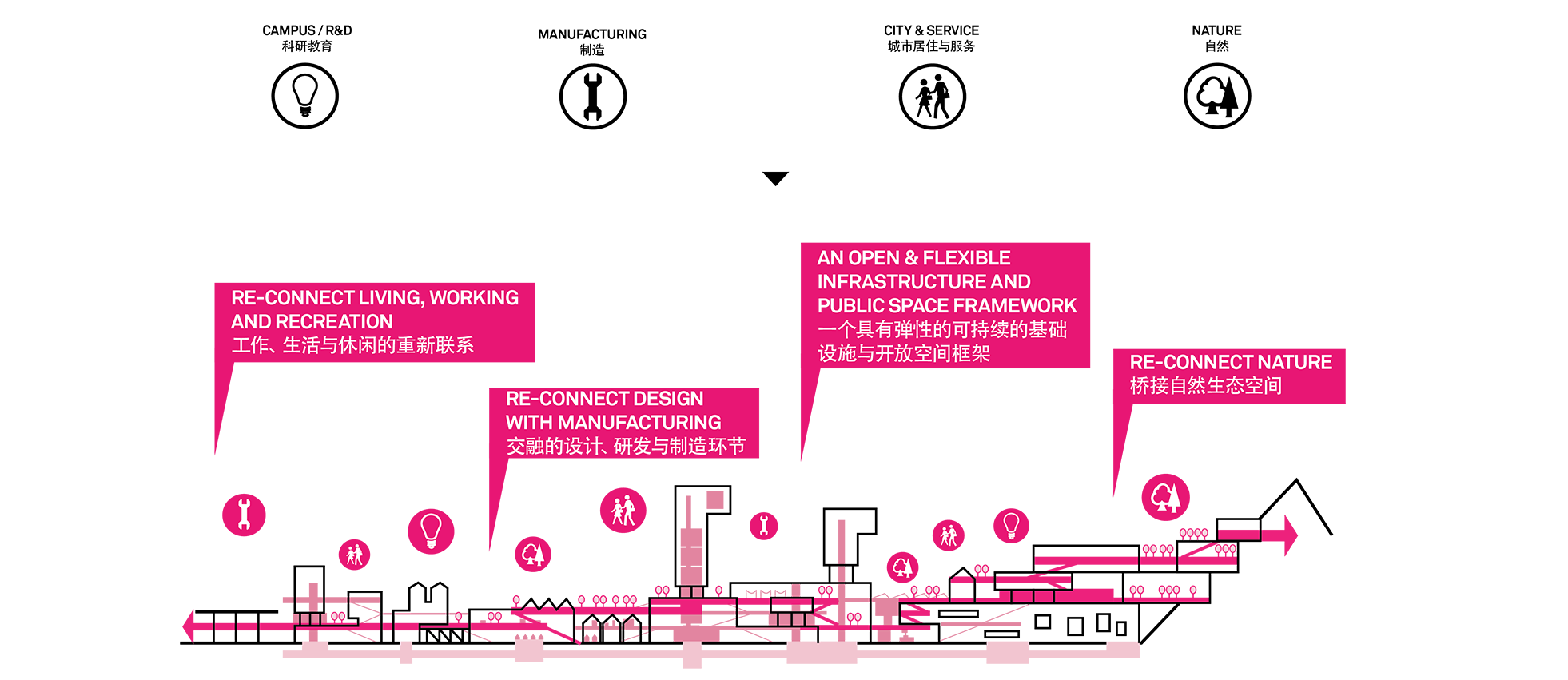
The four corridors proposed for Xinqiao – Start-up Corridor, TOD Super Innovation Corridor, Central Business HQ Corridor and River Corridor – cater to a different mix of surrounding industries, warehouses, prototyping labs, research and development offices and mature business headquarters.
The elevated walkways would allow connection horizontally through the industrial spaces and vertically to the offices – facilitating the connections from design through to production which Shenzhen is famous for. The walkways are conceived as large pieces of infrastructure running through the city, featuring simple rectilinear forms that enable an adaptable and modular construction. Discrete bridges connect the main corridor with the surrounding buildings.
The corridors would be active public spaces – a platform for designers to interact directly with the public through workshops, lectures and exhibitions. Pavilions scattered throughout could showcase a diverse array of digital objects, designed by the surrounding tech community, as working prototypes to encourage feedback, transparency, collaboration and further innovation.
This is the environment of rich fecundity that Bunnie Huang described – where people can come to trade and sell products and ideas.
Public space here isn’t sleek, corporate and comfortable. Instead, it’s filled with stuff – the prototypes of a smart city co-designed by its community. The city’s people will provide ongoing feedback that will shape its development.
This might feature adjustable pavilions with moveable furniture integrated with screens and lighting devices displaying information about climate, environment, and air quality, providing a platform to showcase new products and hold cultural events, like the Shenzhen fringe festival.
This is a model for a smart and innovative city, which focuses on the public realm as the life of the city – rather than the inward looking private campus typical of Silicon Valley. It is dense and urban, but also highly connected to nature through its landscape corridors and parklands beyond. It has a clear structure for efficient city functioning, while ensuring chance encounters and incremental adaptation over time. It is a place that celebrates production; where industrial manufacturing can be mixed together with creative high-tech design, lifestyle and entertainment.
Data is now claimed to be more valuable than oil, which means its collection through our environment will happen more and more, especially as the cities we live in become embedded with smart technologies.
While life in a smart city might feel ever-more convenient and insular with everything decided by an algorithm, the Hassell design for the Xinqiao Open-Source city instead advocates a model that’s a bit messy – a smart city co-designed by its community and oriented around its public and landscape spaces. It builds on Shenzhen’s culture of openness, promoting the exchange of ideas, and helping to secure its future as a global centre for high-tech design and manufacturing.
Liam Mouritz is an Urban Designer based in our Shanghai studio.
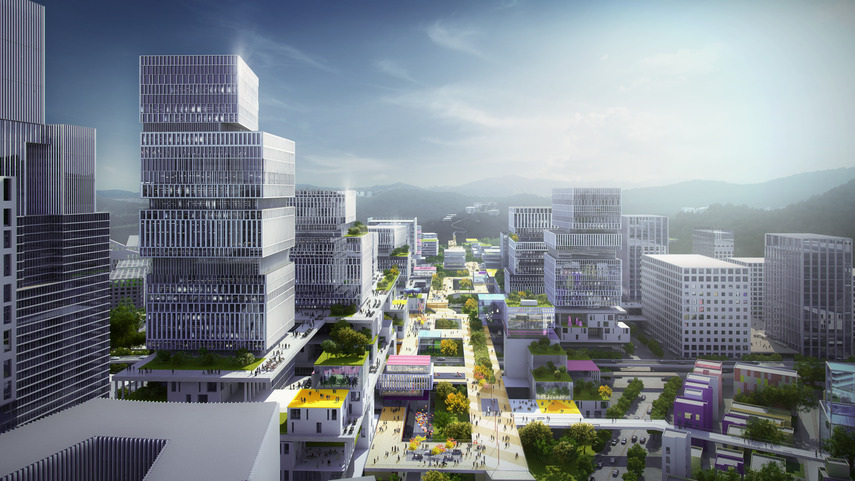

Scan this QR code with your phone to follow Hassell on WeChat.
